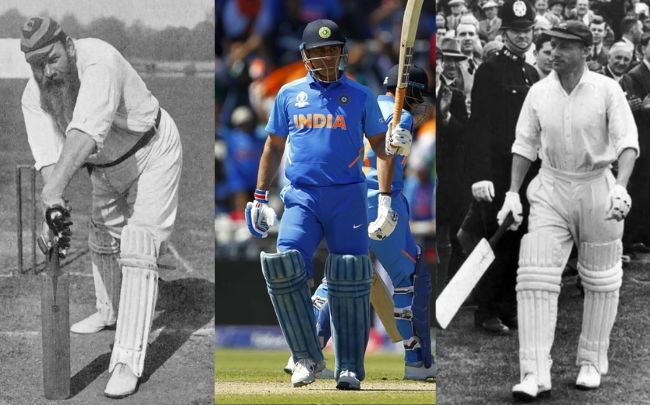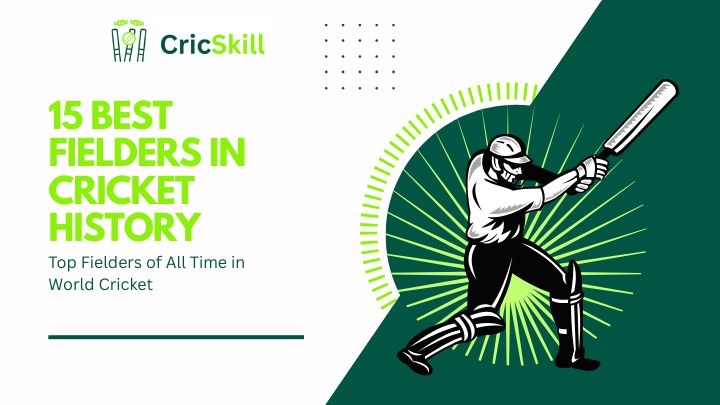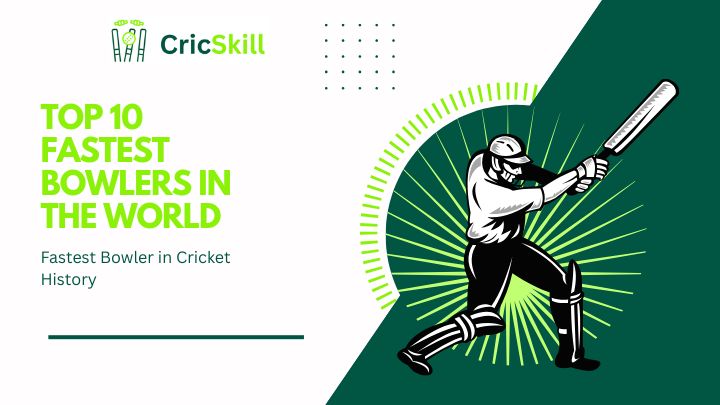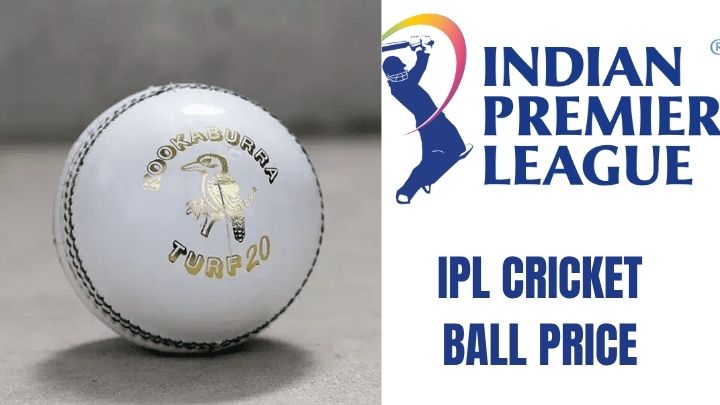The game of cricket has produced a lot of legends over its history. However, only a few of these legends have gone on to etch their name in history with their influence and legacy. Some of them went on to change the way cricket is being played in its current form. This group of cricketers can be termed as the Godfathers of Cricket.
This bunch of cricketers are W.G. Grace, Don Bradman, MS Dhoni, Sachin Tendulkar, Clive Lloyd, and Sir Garfield Sobers. Let’s uncover how these cricketers have contributed to the game of cricket and the changes that they have brought through their performances.
Cricketers Considered As ‘Godfathers Of Cricket’
While several legends have made significant contributions to cricket and won many accolades, here are a few names that stand out when discussing the “Godfather of Cricket.”
| Cricketer | Years | Player Type | Best Performance |
|---|---|---|---|
| W.G. Grace | 1865 – 1908 | All-rounder | 344 in a county match for Marylebone Cricket Club |
| Don Bradman | 1928 – 1948 | Batsman | 452 in First-Class against England |
| Sir Garfield Sobers | 1954 – 1974 | All-rounder | 365* in Test against Pakistan |
| Clive Lloyd | 1966 – 1985 | Batsman | 242* in Test against India |
| Sunil Gavaskar | 1971 – 1987 | Batsman | 236* in Test against West Indies (1983) |
| Sachin Tendulkar | 1989 – 2013 | Batsman | 200* in ODI against South Africa |
| MS Dhoni | 2004 – 2020 | Wicketkeeper-Batsman | 224 in Test against Australia in Chennai |
1. W.G. Grace
| Years | Player | Best Performance |
|---|---|---|
| 1865 – 1908 | All-rounder | 344 in a county match for Marylebone Cricket Club |
Early Life and Career Overview
William Gilbert Grace was born on July 18, 1948, in Downend near Bristol. Grace played cricket during the most part of his life. He made his first-class debut in 1865 at the age of 16 and continued to do so till 1908. His first-class career spanned a record duration of 44 seasons.

Source-Wikipedia
Contributions to Cricket
In his book Jubilee Book of Cricket, K. S. Ranjitsinhji wrote a detailed description of Grace’s batting. The Ranji Trophy has been named after Ranjitsinhji. Regarding Grace, Ranjitsinhji wrote that he “revolutionised batting (by converting) it from an accomplishment into a science”.
Grace featured in 870 first-class matches and amassed 54211 runs at an average of 39.45. He scored 124 centuries and 251 half-centuries. He took 2809 wickets as well at an average of 18.14. These numbers are even to prove the impact that he had on the game.
Stats
- Matches Played: 892
- Runs Scored: 55,309
- Wickets Taken: 2,818
Influence on Modern Cricket
Grace is credited to invent the modern day cricket and it is very much correct considering his batting style. He was the first batter to play forward and back with equal assurance. Some of the modern-day greats have adopted the same style.
Legacy
The opening ceremony for the W. G. Grace Memorial Gates was performed in 1923 by Stanley Jackson, a cricketer from England. He suggested the inclusion of the word The Great Cricketer in Grace’s dedication. In most of the tributes that have been paid to Grace, he has been referred to as The Great Cricketer. On September 12, 2009, he was posthumously inducted into the ICC Cricket Hall of Fame.
2. Don Bradman
| Years | Player Type |
Best Performance |
|---|---|---|
| 1928 – 1948 | Batsman | 452 in First Class against England |
Early Life and Career Overview
Sir Donald George Bradman was an Australian cricketer born on August 27, 1908 in Cootamundra, New South Wales. He finished his career with a batting average of 99.94, which is something that seems impossible to maintain in this point of time when scoring runs has become a lot easy. Bradman was so much effective with the bat that English bowlers had to devise a set of tactics called Bodyline to stop him from scoring runs.

Source-ANI News
Contributions to Cricket
Some of the records that Bradman achieved are still there and are unbreakable. His Test batting average of 99.94 is considered the greatest achievement by any sportsman in any major sport. Bradman maintained that average after playing 52 Test matches for Australia. He scored 6996 runs and hit 29 centuries and 13 half-centuries. In his 80 Test innings, Bradman scored 50 or more runs in 42 outings, which means that he was scoring a half-century in every alternate innings.
Stats
- Matches Played: 52 Tests
- Runs Scored: 6,996
- Batting Average: 99.94
Influence on Modern Cricket
At the age of 22, Bradman hit 974 runs in just five Test matches during Australia’s tour of England. He scored four centuries on that tour. Even after 95 years, this record is still going strong. Bradman gave a masterclass in batting during his time that is being studied by modern-day cricketers to this day.
Legacy
In the 1963 edition of Wisden Cricketers’ Almanack, Bradman was selected as one of the Six Giants of the Wisden Century. In 2000, he was selected as one of the five Wisden Cricketers of the Century by cricket experts. The panel contained 100 members, and all of them voted for Bradman to be selected on the list.
3. Sir Garfield Sobers
| Years | Player Type | Best Performance |
|---|---|---|
| 1954 – 1974 | All-rounder | 365* in Test against Pakistan |
Early Life and Career Overview
Sir Garfield Sobers was born on July 28, 1936, in Bridgetown, the Colony of Barbados. Sobers was excellent in all three departments of the game and is referred to as cricket’s greatest ever all-rounder. He made his first-class debut at the age of 16 in 1953. His Test debut happened in 1954 against England.

Source- Cricket n more
Contributions to Cricket
In 1958, Sobers scored his maiden century against Pakistan in Kingston and then finished unbeaten on 365 runs. This remained the highest individual score in a Test match till 1994 when Brian Lara scored 375 runs against England. On August 31, 1968, Sobers became the first batter ever to hit six sixes in an over in first-class cricket.
Stats
- Matches Played: 93 Tests, 1 ODI
- Runs Scored: 8,032
- Wickets Taken: 235
- Centuries: 26 Test centuries
Influence on Modern Cricket
Sobers is called the greatest all-rounder of the game. He had a huge impact on players like Jacques Kallis, Andrew Flintoff, and Ben Stokes. These have been some of the best all-rounders of the game in modern cricket. Not just all-rounders but great batters like Sachin Tendulkar and Ricky Ponting have also spoken about Grace’s contribution and impact on the game.
Legacy
Sobers was made a National Hero of Barbados by the Cabinet of Barbados in 1998. He won the Wisden Cricketer of the Year award in 1964 and won the Walter Lawrence Trophy in 1974. He, along with Don Bradman, Jack Hobbs, Shane Warne, and Viv Richards, was named five Wisden Cricketers of the Century. Sobers received 90 votes out of 100. In 2004, the International Cricket Council (ICC) announced the Sir Garfield Sobers Trophy, which is awarded to the ICC’s Player of the Year.
4. Clive Lloyd
| Years | Player Type | Best Performance |
|---|---|---|
| 1966 – 1985 | Batsman | 242* in Test against India |
Early Life and Career Overview
Clive Lloyd was born on August 31, 1944, in Georgetown, Guyana. He is regarded as one of the greatest captains of the game. Under Lloyd’s captaincy, the West Indies qualified for three ODI World Cup finals and won two of them. The West Indies won the inaugural edition of the tournament in 1975 and then in 1979 as well In 1983, India defeated the West Indies in the final of the World Cup. He scored a century in the final of the ODI World Cup 1975.

Source– Counterview
Contributions to Cricket
Lloyd captained the West Indies between 1974 and 1985. Under his leadership, the team enjoyed a great run in both Test and ODI cricket. At one point during his captaincy, the West Indies were undefeated in 27 matches and won 11 games in succession. Lloyd was the first West Indies player to play 100 Test matches.
Stats
- Matches Played: 110 Tests, 87 ODIs
- Runs Scored: 7,515 Test runs, 1,977 ODI runs
- Centuries: 19 Test centuries, 1 ODI century
Influence on Modern Cricket
Apart from being a great captain, Lloyd was a great batter as well. He played 110 Test matches for the West Indies and scored 7515 runs at an average of 46.67. He made 19 centuries and 39 half-centuries in Test cricket. In ODIs, Lloyd scored 1977 runs at a strike rate of 81.22.
He influenced the next generation of cricket not just in the West Indies but across the world. Unlike countries like Australia, England, or India, the West Indies are a group of islands with different cultures and backgrounds. He managed to unite players from all these islands and led the team perfectly.
Legacy
In 1971, Lloyd won the Wisden Cricketer of the Year award for his performances in the previous 12 months. On January 22, 1985, Lloyd was made an honorary Officer of the Order of Australia for his services to the game of cricket and his positive influence on the game in Australia.
5. Sunil Gavaskar
| Years | Player Type | Best Performance |
|---|---|---|
| 1971 – 1987 | Batsman | 236* in Test against West Indies (1983) |

Source: 7Cric Cricket
Early Life and Career Overview
Sunil Gavaskar was born on July 10, 1949, in Bombay (now Mumbai). He was destined to become a great cricketer from his childhood. In 1966, Gavaskar was named India’s Best Schoolboy Cricketer of the year while he was studying in St Xavier’s High School. He went on to make his first-class debut for Vazir Sultan Colts XI against an XI from Dungarpur in 1966–67. He was selected in the squad for the 1970-71 tour of the West Indies. Gavaskar went on to become one of the greatest opening batsmen in world cricket.
Contributions to Cricket
Gavaskar made his Test debut in the second Test of the 1970-71 tour of the West Indies. He finished the series with 774 runs in eight innings and scored four centuries and three half-centuries. India won the five-match series by 1-0 and recorded their first victory over the West Indies.
Gavaskar played 125 Test matches for India and amassed 10122 runs at an average of 51.12. He scored 34 centuries and 45 half-centuries. Gavaskar won the Wisden Player of the Year award in 1980. He held the record for the highest number of Test centuries (34) before Sachin Tendulkar went past him in 2005.
Stats
- Matches Played: 233 (125 Tests, 108 ODIs)
- Runs Scored: 13,214 (Test: 10,122, ODI: 3,092)
- Centuries: 35 (Test: 34, ODI: 1)
- Catches Taken: 130 (Test: 108, ODI: 22)
Influence on Modern Cricket
Gavaskar had a great influence on Indian cricket. He stood against the pace bowling unit of the infamous West Indies side in the 80s and gave answers with his bat. He scored 13 centuries against the West Indies.
Batters of other generations learned this art of facing pace bowling from him. Batters like Sachin Tendulkar, Rahul Dravid, and Sourav Ganguly made their name in world cricket probably due to the influence that Gavaskar had on them.
Legacy
Gavaskar is known as one of the best Indian openers of all time. Gavaskar had a record outing in his debut series against the West Indies. His performance was commemorated by Trinidad Calypso singer Lord Relator with a song called “Gavaskar Calypso”, with the lyrics “It was Gavaskar. De real master. Just like a wall. We couldn’t out Gavaskar at all, not at all.”
6. Sachin Tendulkar
| Years | Player Type | Best Performance |
|---|---|---|
| 1989 – 2013 | Batsman | 200* in ODI against South Africa |
Early Life and Career Overview
Sachin Tendulkar was born on April 24, 1973, in Bombay (now Mumbai). He made his Test debut at the age of 16 on November 15, 1989. Sachin represented India for over 24 years and played last Test match in November 2013. He won a number of major awards and added a lot of records to his name in his career.

Source– Royal Challengers Bangalore
Contributions to Cricket
No player comes close to Sachin in terms of contribution to cricket in recent times. Sachin was ranked the second-greatest Test batter of all-time by Wisden in 2002, behind Don Bradman. He was the first male cricketer to score a double-century in ODIs. In 2010, Sachin won the Sir Garfield Sobers Trophy for cricketer of the year. Sachin played 664 matches for India across formats and amassed 34357 runs at an average of 48.52. He scored 100 centuries and 164 half-centuries.
Stats
- Matches Played: 664 International Matches
- Runs Scored: 34,357
- Centuries: 100 International Centuries
Influence on Modern Cricket
Sachin has had a very influential career. Not just young cricketers, Sachin had a massive influence on the players of his generation, too. During the Australia tour of India in 1998, Australian opener Matthew Hayden said, “I have seen God. He bats at no.4 in India in Tests”.
Legacy
Sachin received a lot of national honours in India. In 2014, he received Bharat Ratna, the highest civilian award in India. He is the only sportsperson to receive this award. In 2012, he was honored with Order of Australia by the Australian government.
7. MS Dhoni
| Years | Player Type | Best Performance |
|---|---|---|
| 2004 – 2020 | Wicketkeeper-Batsman | 224 against Australia in Chennai |
Early Life and Career Overview
Mahendra Singh Dhoni was born on July 7, 1981, in Ranchi, Jharkhand. He is the only captain to win three different limited-overs ICC tournaments. He is regarded as the most successful cricket captains and one of the greatest batters in ODI cricket. During his prime, Dhoni was referred to as one of the top finishers.

Source- NDTV Sports
Contributions to Cricket
Dhoni’s contributions to cricket are vast. He led India to numerous victories, including the 2007 T20 World Cup, 2010 and 2016 Asia Cups, 2011 ICC Cricket World Cup, and the 2013 ICC Champions Trophy. His innovative captaincy and ability to finish games made him a beloved figure in cricket.
Stats
- Matches Played: 538 International Matches
- Runs Scored: 17,266
- Catches/Stumpings: 634/195
Influence on Modern Cricket
Dhoni is the only player on this list who is still playing some form of cricket. He has been a massive influence on cricketers who have made their debut in recent few years. We have seen young players asking Dhoni for a selfie after their matches in the IPL.
Legacy
Dhoni’s legacy contains a lot of elements like his captaincy, his finishing skills, and his Captain Cool aura. He is one of the most successful captains in the IPL, winning the trophy on five occassions. Dhoni has received Major Dhyanchand Khel Ratna award, Padma Shri, and Padma Bhushan. He was a part of the ICC Men’s ODI Team of the Year for eight years. He was the captain of the ICC Men’s ODI Team of the Year in 2009. Dhoni won the ICC ODI Player of the Year award in 2008 and 2009.
Who Can Be The Next Godfather Of Cricket?
While it’s challenging to predict who might be the next “Godfather of Cricket,” several current players have the potential to leave a lasting impact on the sport:
- Virat Kohli (India): He has been one of the greatest batters in modern times. Kohli has already left Sachin behind in terms of the most centuries in ODIs. Hence, he is one serious contender for being the next Godfather of Cricket.
- Ben Stokes (England): Stokes has been one of the greatest all-rounders in the modern era. He has won some of the most important matches for England. Under his captaincy, England has been playing an attacking form of cricket in Test matches, which was unimaginable in the past few decades.
- Joe Root (England): Joe Root has been one of the most consistent batters in Test cricket for a long time. He has already become the leading run-scorer for England in Test matches. He is likely to go to the second position on the list of batters in most runs in the next few months.
The next godfather of cricket might be a cricketer with a strong legacy. He need to be someone who can inspire the next generation of cricketers to become like him. Someone who make the game of cricket popular among the non-cricketing nations.
Also Read This:
Conclusion – Godfathers Of Cricket Have Shaped Modern Cricket!
These godfathers of cricket have shaped the way modern-day cricket is being played. They helped the game become popular and helped the game take the shape it is currently in. The game of cricket is all set to feature in the upcoming Olympics in 2028. This has been possible because the game has reached its pinnacle due to the efforts made by these greats.
FAQs
What criteria are used to determine the Godfather of Cricket?
The criteria used to determine the Godfather of Cricket are players’ overall impact on the game. Captaincy skills have also been used to come to the conclusion of who the Godfather of cricket can be.
Can there be more than one Godfather of Cricket?
Multiple players can be considered Godfathers of Cricket due to their unique contributions to different aspects or eras of the game.
How has the role of the Godfather of Cricket evolved over time?
The role of these Grandfathers of cricket have evolved from developing new playing techniques to influencing aspects like the growth of the game. These cricketers have basically given the idea of how the game of cricket can be played to their upcoming generations.
How do cultural and regional differences affect the perception of the Godfather of Cricket?
Cultural and regional differences can lead to different perceptions related to the grandfather of cricket. For a cricket fan in Australia, Don Bradman might be the right player to be called the grandfather of cricket. The same perception might change when it comes to the West Indies or India.
How do modern cricketers view the legacy of the Godfather of Cricket?
Modern cricketers often view the legacy of cricket’s godfathers with great respect, drawing inspiration from their achievements and striving to build upon their contributions to the sport.





